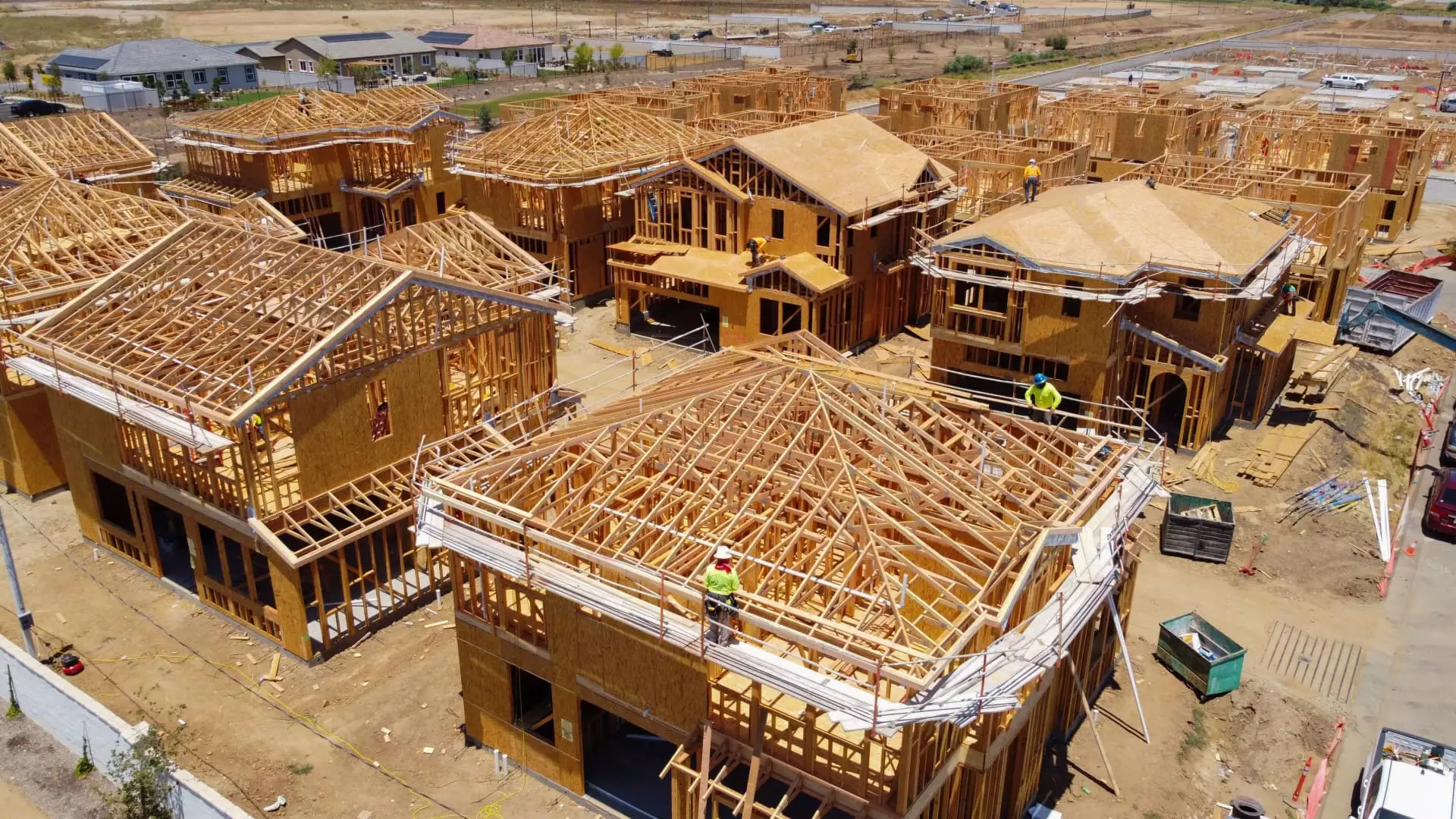The financial landscape of the homebuilding industry appears primed for transformation as a long-anticipated interest rate cut by the Federal Reserve approaches. In recent months, homebuilder stocks have surged, buoyed by expectations that the era of rate hikes has concluded. Analysts suggest that the recent climb in stock prices, particularly since October 2023, may encapsulate a broader optimism regarding the economic outlook, leading to a state that analysts at RBC Capital Markets describe as being “priced for perfection.” However, the reality beneath this surface could be more complex, as underlying industry fundamentals appear fragile.
Mike Dahl, an RBC analyst, articulates a note of caution, suggesting that while stocks in the homebuilding sector have reacted positively to the Fed’s signals, this exuberance may be premature. With historical data illuminating that during previous Fed cycles, homebuilder stock gains have tended to underperform relative to current projections, it raises questions about the sustainability of the recent market optimism. As investors weigh the potential benefits against inherent market risks, a cautious approach may be warranted as the Federal Reserve prepares to convene and discuss interest rates.
Current Market Trends and Stock Performance
The S&P Homebuilders ETF (XHB) has experienced a notable uptick, advancing nearly 26% in 2024 alone, with a significant 15% jump in the last three months. The rally in homebuilder stocks, such as those of Toll Brothers, Taylor Morrison Home, and Tri Pointe Homes, highlights a market that seems ready to respond positively to a rate cut. However, RBC’s analysis suggests that while these stocks are climbing, a significant portion of these gains may already be reflected in current pricing, creating an intriguing paradox for investors.
Despite the positive trajectory of stocks, Dahl notes concerns about the sustainability of these improvements in light of market volatility and mixed economic signals. The contrast between current stock performances and the broader trend of homebuilder stock gains in prior economic cycles raises critical questions about future profitability. For instance, despite a 46% rise in Toll Brothers’ stock and 38% in KB Home, the underlying valuations may not necessarily translate to long-term demand within the housing market.
As markets gear up for the Fed’s policy meeting, investor sentiment leans heavily towards anticipating a concrete rate cut. The chances are tantalizingly close, with traders indicating a 59% probability of a 50-basis point reduction. Yet, the notion that a more aggressive cut could signal deeper underlying economic concerns presents a double-edged sword. Analysts caution that should the Fed take a more drastic approach, it might imply a swift deterioration of economic conditions rather than a strengthening recovery.
The concept that lower rates might spur consumer spending is tempered by the reality of mixed economic data. Dahl notes ongoing risks related to incremental consumer and employment instability, emphasizing that stock performance during previous rate cuts has been inconsistent, hinging on the Fed’s ability to stave off recession. The cautious perspective suggests that predicting the impact of a rate cut requires recognizing the fragility of the current economic milieu.
Barclays analyst Matthew Bouley offers additional insights into the state of the housing market, highlighting the critical role of consumer behavior in determining the trajectory of homebuilder stocks. With rising inventories of single-family homes, mixed conditions in new home starts, and a lack of robust improvements in mortgage applications, the sector displays signs of significant variability. However, modest increases in new home sales suggest that fluctuations in mortgage rates might be drawing buyers back into the market.
Bouley underscores the market’s current sensitivity to pricing and valuation, indicating that many homebuilder stocks could be vulnerable, particularly if housing fundamentals do not support continued price increases. That said, larger homebuilders, such as D.R. Horton, appear to possess a competitive advantage in the current climate, leveraging their resources to offer incentives that could bolster demand in the face of affordability challenges.
As the anticipated interest rate cut looms, the homebuilding industry is at a crossroads fraught with complexity and uncertainty. While optimism persists among investors and certain sectors show resilience, careful scrutiny of economic indicators will remain essential to discerning sustainable growth within the market. The interplay between interest rates, consumer behavior, and broader economic conditions will dictate the viability of this recovery, compelling stakeholders to navigate these waters with caution and strategic foresight. With the Fed’s meeting on the horizon, all eyes are set on the decision that could shape the future of the housing market for the foreseeable future.

